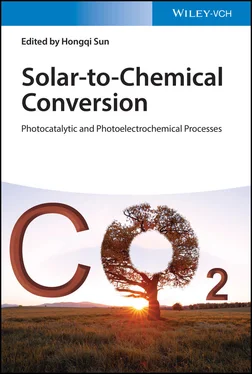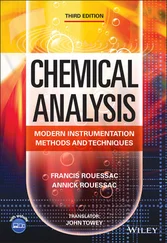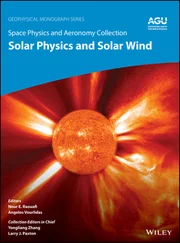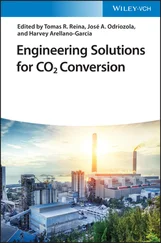Source: Yu et al. [83].
Based on early reports of electro‐ or light‐driven Co and Mn oxide catalysts, the findings display that these catalysts have the TOFs per metal center in the range 10 −4to 10 −2O 2s −1at overpotentials in the 30–400 mV range depending on the structure, pH, and temperature conditions, which are at least 2 orders of magnitude lower than TOF of IrO 2clusters at similar overpotential [84]. In the past several years, therefore, intense efforts have been paid to enhance the TOF per projected area of the catalyst by optimizing the Co‐, Mn‐, and Ni‐based metal oxide. For example, amorphous Co species (a‐Co‐E) synthesized through thermal treatment of a Co‐ethylene diamine tetraacetic acid complex were combined with Bi 2WO 6, and the product exhibited an impressively higher photocatalytic O 2evolution rate than that of the CoO x‐loaded counterparts [85]. The findings suggested that the photocatalytic O 2production rate of the Bi 2WO 6/a‐Co‐E hybrid is apparently enhanced to 352.3 μmol g −1h −1with no obvious decrease in six hours, which is 3.6 times higher than that of Bi 2WO 6/CoO x, testifying the excellent capability of a‐Co‐E to function as the cocatalyst over CoO x. Graphitic carbon nitride and cubic cobalt manganese spinel (c‐CoMn 2O 4) as light transducer and water oxidation cocatalyst were used to assemble effective water oxidation system [86]. Owing to acceleration of interface charge transfer rate and decreasing of the excessive energy barrier for O–O formation, the oxygen evolution rate of the g ‐C 3N 4/CoMn 2O 4, 18.3 μmol h −1, is four times higher than that of pristine g ‐C 3N 4. To further provide more active sites for water oxidation, novel mesoporous MOFs are utilized as a host material to realize the strategy [87]. Co‐based POM possessing stable water oxidation on central Co IIIsites is coupled with MIL‐100(Fe), which not only immobilizes homogeneous Co‐POM cluster but also contributes more surface areas [88]. The results reveal that a 1.72‐fold increasing of oxygen yield and TOF of 9.2 × 10 −3s −1are achieved for the Co‐POM/MIL‐100(Fe) hybrids.
The energy shortage and environmental‐related problems are becoming the worsening global crisis and the great challenges for human in the twenty‐first century. The artificial photosynthesis process involved in transformation of carbon dioxide and water to value‐added chemical fuels is a promising strategy to rebuild the global energy consumption and elemental balance, and the potential rewards are enormous. Up to now, the main goal of scientists is to synthesize photoactive materials that are able to chemically couple these light‐driven redox reactions together and to achieve conversion efficiency and selectivity that outperforms nature's photosynthesis. However, photoconversion of carbon dioxide with water contains thermodynamically uphill, multi‐electron, multi‐hole, and multi‐proton processes occurring on a multicomponent photocatalyst, where many challenges are presented in the fields of catalysis, energy science, semiconductor physics, and engineering. To develop effective artificial photosynthesis and conversion, several key considerations must be balanced, including the following: (i) A deep understanding of processes that occur on the surface of photocatalysts during artificial photosynthesis processes, e.g. adsorption/desorption of gaseous reactants, products, and intermediates, as well as the role of adsorbed water. (ii) The potential great improvement of efficiency in carbon dioxide photoreduction can result from significantly increasing the lifetime of the charge‐separated state. The time scale of this electron–hole recombination is two to 3 orders of magnitude faster than other electron transfer processes. Therefore, any process that inhibits electron–hole recombination would greatly increase the efficiency and rates of carbon dioxide reduction and water oxidation. For example, electrical conductivity and diffusion length of the photocatalyst should be as high as possible to minimize recombination of electron–hole pairs. Ultrathin nanostructures may also facilitate the charge carrier transport to surface reaction sites to participate reductive chemistry. Spatial separation of photoexcited electrons and holes can also be reduced by the electron–hole recombination, which was achieved by cocatalysts, Z‐scheme, or heterostructures of coupling two semiconductors with properly aligned band structures. (iii) The kinetics of photocatalytic carbon dioxide reduction is also dependent upon light absorption by the photocatalyst. Many optical techniques are potentially useful for harvesting light for improvement of the efficiency including structuring for multiple light scattering to increase the effective optical path length, and upconversion to transform non‐absorbed infrared light to absorbed visible light. (iv) Large surface area and porosity are required to maximize the adsorption, transport, and desorption of reactants, intermediates, and products. (v) As defects such as oxygen vacancies control most of the chemistry at many metal oxide surfaces, oxygen vacancies are believed to act as a very important role on electron trapping and activating CO 2. The oxygen vacancies can be created either by doping with other anions or cations or by thermal treatments of stoichiometric photocatalysts, and these defects can be detected with in situ electron paramagnetic resonance spectroscopy, UV photoemission spectroscopy, metastable impact electron spectroscopy, and so on. (vi) A high‐efficiency process is also necessary to be founded on photoactive materials made of earth‐abundant, nontoxic, light‐stable, scalable, and low‐cost materials.
In addition, the efficiency of photocatalytic reduction of carbon dioxide could be deactivated after irradiation for long time. The deactivating phenomenon in the photocatalytic reduction of carbon dioxide can be attributed to the following three reasons: (i) The adsorption or accumulation of intermediate products on the semiconductor surface could occupy photocatalytic reaction centers and also hinder the adsorption of carbon dioxide or water, which could lead to the deactivation of semiconductors under the continuous irradiation. (ii) The desorption of hydrocarbon production affects the continuous adsorption of reactants that take part in the photocatalytic reaction. (iii) The surface contamination of semiconductors shields the light absorption, resulting in the reduction of the generation of electron–hole pairs. Therefore, it is necessary to pay more attention to the study of semiconductor deactivation in future work.
This work is supported financially by the National Natural Science Foundation of China (21501138), the Natural Science Foundation of Hubei Province (2019CFB556), and the Science Research Foundation of Wuhan Institute of Technology (K201939).
1 1 (a) Oppenheimer, M. and Alley, R.B. (2005). Clim. Change 68: 257. (b) Leifeld, J. and Fuhrer, J. (2005). Environ. Sci. Policy 8: 410.
2 2 (a) Keller, F., Lee, R.P., and Meyer, B. (2020). J. Cleaner Prod. 250: 119484. (b) Kaur‐Sidhu, M., Ravindra, K., Mor, S., and John, S. (2020). Atmos. Pollut. Res. 11: 252.
3 3 (a) Bachu, S., Bonijoly, D., Bradshaw, J. et al. (2007). Int. J. Greenhouse Gas Control 1: 430. (b) Rubin, E.S., Chen, C., and Rao, A.B. (2007). Energy Policy 35: 4444. (c) Davison, J. (2007). Energy 32: 1163.
4 4 Herron, J.A., Kim, J., Upadhye, A.A. et al. (2015). Energy Environ. Sci. 8: 126.
5 5 (a) McConnell, I., Li, G., and Brudvig, G.W. (2010). Chem. Biol. 17: 434. (b) Larkum, A.W. (2010). Curr. Opin. Biotechnol. 21: 271.
6 6 van Grondelle, R. and Boeker, E. (2017). J. Phys. Chem. B 121: 7229.
Читать дальше


![Евгений Матерёв - Музеи… или вдохновляющая музыка The Chemical Brothers [litres самиздат]](/books/437288/evgenij-materev-muzei-ili-vdohnovlyayuchaya-muzyka-th-thumb.webp)









